对于数据库的安装来说,我想很多朋友都是在虚拟机中完成实验过程的。
但在生产环境中,和虚拟机环境还是有很多区别和需要注意的地方的。
就以我近期为铁路主数据中心安装数据库的过程举例,为大家说明一下在生产环境中,安装Oracle的过程。
我们首先要了解清楚安装的具体信息,如:
数据库服务器的IP地址,服务器主机名,服务器用户名和口令;
操作系统版本(建议重装安装操作系统,这样更符合数据库的要求)
数据库版本,数据库安装路径,数据库实例名,数据库用户名和口令,数据库安装目录结构,数据相关配置等。
此片文章略过这些内容,直接进入安装过程。
第一步、创建相关组和用户:
# groupadd -g 54321 oinstall
# groupadd -g 54322 dba
# groupadd -g 54323 oper
# useradd -u 54321 -g oinstall -G dba,oper oracle
# echo "oracle"|passwd oracle --stdin
第二步、挂在操作系统ISO文件:
由于生产环境中,可能存在缺少rpm包的情况,我们需要通过操作系统ISO介质,手动安装这些缺失的RPM包。
将安装rhel-server-7.7-x86_64-dvd.iso文件上传到/media目录中,进行挂载。
# mount -t iso9660 /media/rhel-server-7.7-x86_64-dvd.iso /mnt/iso7
同时也可以添加到/etc/fstab文件最后,实现重启后自己挂载
/media/rhel-server-7.7-x86_64-dvd.iso /mnt/iso7 iso9660 defaults 0 0
第三步、配置yum源
编辑/etc/yum.repo.d/目录中的文件,添加本地yum源
# vi local.repo
[local]
name=RHEL7.4
baseurl=file:///mnt/iso7
enabled=1
gpgcheck=0
第四步、安装PRM包
我们可以从Oracle的官方文档中了解到相关版本,所需要的RPM包。
本次安装的是Oracle 11.2.0.4 版本,因此安装的RPM包如下:
binutils-2.20.51.0.2-5.11.el6 (x86_64)
compat-libcap1-1.10-1 (x86_64)
compat-libstdc++-33-3.2.3-69.el6 (x86_64)
compat-libstdc++-33-3.2.3-69.el6.i686
gcc-4.4.4-13.el6 (x86_64)
gcc-c++-4.4.4-13.el6 (x86_64)
glibc-2.12-1.7.el6 (i686)
glibc-2.12-1.7.el6 (x86_64)
glibc-devel-2.12-1.7.el6 (x86_64)
glibc-devel-2.12-1.7.el6.i686
ksh
libgcc-4.4.4-13.el6 (i686)
libgcc-4.4.4-13.el6 (x86_64)
libstdc++-4.4.4-13.el6 (x86_64)
libstdc++-4.4.4-13.el6.i686
libstdc++-devel-4.4.4-13.el6 (x86_64)
libstdc++-devel-4.4.4-13.el6.i686
libaio-0.3.107-10.el6 (x86_64)
libaio-0.3.107-10.el6.i686
libaio-devel-0.3.107-10.el6 (x86_64)
libaio-devel-0.3.107-10.el6.i686
make-3.81-19.el6
sysstat-9.0.4-11.el6 (x86_64)
使用yum命令进行安装:
yum install gcc compat-libcap1 gcc-c++ libgcc libstdc++ libaio libaio-devel make sysstat ksh glibc glibc-devel libstdc++-devel elfutils-libelf-develglibc-2.17-292.el7.i686 glibc-devel-2.17-292.el7.i686 libstdc++-4.8.5-39.el7.i686 libstdc++-devel-4.8.5-39.el7.i686 libaio-0.3.109-13.el7.i686 libaio-devel-0.3.109- 13.el7.i686
安装完成后,使用如下命令检查RPM包是否全部安装
rpm -q --qf '%{NAME}-%{VERSION}-%{RELEASE} (%{ARCH})\n' binutils \
compat-libcap1 \
compat-libstdc++-33 \
gcc \
gcc-c++ \
glibc \
glibc-devel \
ksh \
libgcc \
libstdc++ \
libstdc++-devel \
libaio \
libaio-devel \
make \
sysstat
由于在Redhat 7版本中安装11g数据库,需要使用RHEL6版本中的相关包,因此需要使用RHEL6的安装介质安装如下包:
rpm -ivh compat-libstdc++-33-3.2.3-69.el6.x86_64.rpm
rpm -ivh compat-libstdc++-33-3.2.3-69.el6.i686.rpm
第五步、添加操作系统内核参数:
编辑/etc/sysctl.conf文件,增加相关内容
# vi /etc/sysctl.conf
# sysctl settings are defined through files in
# /usr/lib/sysctl.d/, /run/sysctl.d/, and /etc/sysctl.d/.
#
# Vendors settings live in /usr/lib/sysctl.d/.
# To override a whole file, create a new file with the same in
# /etc/sysctl.d/ and put new settings there. To override
# only specific settings, add a file with a lexically later
# name in /etc/sysctl.d/ and put new settings there.
#
# For more information, see sysctl.conf(5) and sysctl.d(5).
# oracle-database-server-12cR2-preinstall setting for fs.file-max is 6815744
fs.file-max = 6815744
# oracle-database-server-12cR2-preinstall setting for kernel.sem is '250 32000 100 128'
kernel.sem = 250 32000 100 128
# oracle-database-server-12cR2-preinstall setting for kernel.shmmni is 4096
kernel.shmmni = 4096
# oracle-database-server-12cR2-preinstall setting for kernel.shmall is 1073741824 on x86_64
kernel.shmall = 1073741824
# oracle-database-server-12cR2-preinstall setting for kernel.shmmax is 4398046511104 on x86_64
kernel.shmmax = 4398046511104
# oracle-database-server-12cR2-preinstall setting for kernel.panic_on_oops is 1 per Orabug 19212317
kernel.panic_on_oops = 1
# oracle-database-server-12cR2-preinstall setting for net.core.rmem_default is 262144
net.core.rmem_default = 262144
# oracle-database-server-12cR2-preinstall setting for net.core.rmem_max is 4194304
net.core.rmem_max = 4194304
# oracle-database-server-12cR2-preinstall setting for net.core.wmem_default is 262144
net.core.wmem_default = 262144
# oracle-database-server-12cR2-preinstall setting for net.core.wmem_max is 1048576
net.core.wmem_max = 1048576
# oracle-database-server-12cR2-preinstall setting for net.ipv4.conf.all.rp_filter is 2
net.ipv4.conf.all.rp_filter = 2
# oracle-database-server-12cR2-preinstall setting for net.ipv4.conf.default.rp_filter is 2
net.ipv4.conf.default.rp_filter = 2
# oracle-database-server-12cR2-preinstall setting for fs.aio-max-nr is 1048576
fs.aio-max-nr = 1048576
# oracle-database-server-12cR2-preinstall setting for net.ipv4.ip_local_port_range is 9000 65500
net.ipv4.ip_local_port_range = 9000 65500
第六步、修改用户资源配置
编辑/etc/security/limits.conf文件,增加相关内容:
# vi /etc/security/limits.conf
# /etc/security/limits.conf
#
#This file sets the resource limits for the users logged in via PAM.
#It does not affect resource limits of the system services.
#
#Also note that configuration files in /etc/security/limits.d directory,
#which are read in alphabetical order, override the settings in this
#file in case the domain is the same or more specific.
#That means for example that setting a limit for wildcard domain here
#can be overriden with a wildcard setting in a config file in the
#subdirectory, but a user specific setting here can be overriden only
#with a user specific setting in the subdirectory.
#
#Each line describes a limit for a user in the form:
#
#<domain> <type> <item> <value>
#
#Where:
#<domain> can be:
# - a user name
# - a group name, with @group syntax
# - the wildcard *, for default entry
# - the wildcard %, can be also used with %group syntax,
# for maxlogin limit
#
#<type> can have the two values:
# - "soft" for enforcing the soft limits
# - "hard" for enforcing hard limits
#
#<item> can be one of the following:
# - core - limits the core file size (KB)
# - data - max data size (KB)
# - fsize - maximum filesize (KB)
# - memlock - max locked-in-memory address space (KB)
# - nofile - max number of open file descriptors
# - rss - max resident set size (KB)
# - stack - max stack size (KB)
# - cpu - max CPU time (MIN)
# - nproc - max number of processes
# - as - address space limit (KB)
# - maxlogins - max number of logins for this user
# - maxsyslogins - max number of logins on the system
# - priority - the priority to run user process with
# - locks - max number of file locks the user can hold
# - sigpending - max number of pending signals
# - msgqueue - max memory used by POSIX message queues (bytes)
# - nice - max nice priority allowed to raise to values: [-20, 19]
# - rtprio - max realtime priority
#
#<domain> <type> <item> <value>
#
#* soft core 0
#* hard rss 10000
#@student hard nproc 20
#@faculty soft nproc 20
#@faculty hard nproc 50
#ftp hard nproc 0
#@student - maxlogins 4
# End of file
oracle hard nofile 65536
oracle soft nofile 1024
oracle hard nproc 16384
oracle soft nproc 2047
oracle hard stack 32768
oracle soft stack 10240
oracle hard memlock 3145728
oracle soft memlock 3145728
第七步、安装图形化界面(可选)
如果需要通过图形进行数据库的安装,可以配置此步骤:
yum -y groupinstall "X Window System"
yum -y install gnome-classic-session gnome-terminal nautilus-open-terminal control-center liberation-mono-fonts
配置默认启动为图形方式
unlink /etc/systemd/system/default.target
ln -fs /lib/systemd/system/graphical.target /etc/systemd/system/default.target
第八步、配置Oracle用户环境变量
在oracle用户家目录中,/home/oracle/.bash_profile文件里添加如下内容:
export ORACLE_BASE=/home/oracle/app/oracle
export ORACLE_HOME=$ORACLE_BASE/product/11.2.0/dbhome_1
export PATH=$ORACLE_HOME/bin:$PATH
export ORACLE_SID=CADB
第九步、静默安装数据库软件
由于,大多数生产环境都不建议安装gnome,所以没有图形化的支持。因此我们大多数使用响应文件进行数据库软件的静默安装:
./runInstaller -silent -responseFile /home/oracle/db_install.rsp
db_install.rsp脚本内容为:
oracle.install.responseFileVersion=/oracle/install/rspfmt_dbinstall_response_schema_v11_2_0
oracle.install.option=INSTALL_DB_SWONLY
ORACLE_HOSTNAME=ca-database1
UNIX_GROUP_NAME=oinstall
INVENTORY_LOCATION=/home/oracle/app/oraInventory
SELECTED_LANGUAGES=en
ORACLE_HOME=/home/oracle/app/oracle/product/11.2.0/dbhome_1
ORACLE_BASE=/home/oracle/app/oracle
oracle.install.db.InstallEdition=EE
oracle.install.db.EEOptionsSelection=false
oracle.install.db.DBA_GROUP=dba
oracle.install.db.OPER_GROUP=oper
SECURITY_UPDATES_VIA_MYORACLESUPPORT=false
DECLINE_SECURITY_UPDATES=true
oracle.installer.autoupdates.option=SKIP_UPDATES
oracle.install.db.isRACOneInstall=false
oracle.install.db.config.starterdb.type=GENERAL_PURPOSE
ORACLE.INSTALL.DB.CONFIG.STARTERDB.MEMORYOPTION=FALSE
oracle.install.db.config.starterdb.installExampleSchemas=false
oracle.install.db.config.starterdb.enableSecuritySettings=true
oracle.install.db.config.starterdb.control=DB_CONTROL
oracle.install.db.config.starterdb.automatedBackup.enable=false
安装过程如下:
$ ./runInstaller -silent -responseFile /home/oracle/db_install.rsp
Starting Oracle Universal Installer...
Checking Temp space: must be greater than 120 MB. Actual 1087 MB Passed
Checking swap space: must be greater than 150 MB. Actual 8191 MB Passed
Preparing to launch Oracle Universal Installer from /tmp/OraInstall2019-10-28_06-08-19PM. Please wait ...[oracle@sdedu database]$ [WARNING] [INS-13014] Target environment do not meet some optional requirements.
CAUSE: Some of the optional prerequisites are not met. See logs for details. /u01/app/oraInventory/logs/installActions2019-10-28_06-08-19PM.log
ACTION: Identify the list of failed prerequisite checks from the log: /u01/app/oraInventory/logs/installActions2019-10-28_06-08-19PM.log. Then either from the log file or from installation manual find the appropriate configuration to meet the prerequisites and fix it manually.
You can find the log of this install session at:
/u01/app/oraInventory/logs/installActions2019-10-28_06-08-19PM.log
The installation of Oracle Database 11g was successful.
Please check '/u01/app/oraInventory/logs/silentInstall2019-10-28_06-08-19PM.log' for more details.
As a root user, execute the following script(s):
1. /u01/app/oracle/product/11.2.0/dbhome_1/root.sh
Successfully Setup Software.
第十步、静默创建数据库
使用响应文件进行数据库的静默安装:
dbca -silent -responseFile dbca.rsp
dbca.rsp 脚本内容为:
#-----------------------------------------------------------------------------
# GENERAL section is required for all types of database creations.
#-----------------------------------------------------------------------------
[GENERAL]
RESPONSEFILE_VERSION = "11.2.0"
OPERATION_TYPE = "createDatabase"
[CREATEDATABASE]
GDBNAME = ""
SID = "CADB"
TEMPLATENAME = "General_Purpose.dbc"
SYSPASSWORD = "oracle"
SYSTEMPASSWORD = "oracle"
CHARACTERSET = "ZHS16GBK"
#-----------------------*** End of CREATEDATABASE section ***------------------------
第十一步、连接数据库
$ sqlplus / as sysdba
SQL*Plus: Release 11.2.0.4.0 Production on Tue Oct 29 11:00:16 2019
Copyright (c) 1982, 2013, Oracle. All rights reserved.
Connected to:
Oracle Database 11g Enterprise Edition Release 11.2.0.4.0 - 64bit Production
With the Partitioning, OLAP, Data Mining and Real Application Testing options
SQL> select name from v$database;
NAME
---------
CADB
最后,数据库安装完成。
附录:
db_install.rsp文件的模版
####################################################################
## Copyright(c) Oracle Corporation 1998, 2013. All rights reserved.##
## ##
## Specify values for the variables listed below to customize ##
## your installation. ##
## ##
## Each variable is associated with a comment. The comment ##
## can help to populate the variables with the appropriate ##
## values. ##
## ##
## IMPORTANT NOTE: This file contains plain text passwords and ##
## should be secured to have read permission only by oracle user ##
## or db administrator who owns this installation. ##
## ##
####################################################################
#-------------------------------------------------------------------------------
# Do not change the following system generated value.
#-------------------------------------------------------------------------------
oracle.install.responseFileVersion=/oracle/install/rspfmt_dbinstall_response_schema_v11_2_0
#-------------------------------------------------------------------------------
# Specify the installation option.
# It can be one of the following:
# - INSTALL_DB_SWONLY
# - INSTALL_DB_AND_CONFIG
# - UPGRADE_DB
#-------------------------------------------------------------------------------
oracle.install.option=INSTALL_DB_SWONLY
#-------------------------------------------------------------------------------
# Specify the hostname of the system as set during the install. It can be used
# to force the installation to use an alternative hostname rather than using the
# first hostname found on the system. (e.g., for systems with multiple hostnames
# and network interfaces)
#-------------------------------------------------------------------------------
ORACLE_HOSTNAME=sdedu.sandata.com.cn
#-------------------------------------------------------------------------------
# Specify the Unix group to be set for the inventory directory.
#-------------------------------------------------------------------------------
UNIX_GROUP_NAME=oinstall
#-------------------------------------------------------------------------------
# Specify the location which holds the inventory files.
# This is an optional parameter if installing on
# Windows based Operating System.
#-------------------------------------------------------------------------------
INVENTORY_LOCATION=/u01/app/oraInventory
#-------------------------------------------------------------------------------
# Specify the languages in which the components will be installed.
#
# en : English ja : Japanese
# fr : French ko : Korean
# ar : Arabic es : Latin American Spanish
# bn : Bengali lv : Latvian
# pt_BR: Brazilian Portuguese lt : Lithuanian
# bg : Bulgarian ms : Malay
# fr_CA: Canadian French es_MX: Mexican Spanish
# ca : Catalan no : Norwegian
# hr : Croatian pl : Polish
# cs : Czech pt : Portuguese
# da : Danish ro : Romanian
# nl : Dutch ru : Russian
# ar_EG: Egyptian zh_CN: Simplified Chinese
# en_GB: English (Great Britain) sk : Slovak
# et : Estonian sl : Slovenian
# fi : Finnish es_ES: Spanish
# de : German sv : Swedish
# el : Greek th : Thai
# iw : Hebrew zh_TW: Traditional Chinese
# hu : Hungarian tr : Turkish
# is : Icelandic uk : Ukrainian
# in : Indonesian vi : Vietnamese
# it : Italian
#
# all_langs : All languages
#
# Specify value as the following to select any of the languages.
# Example : SELECTED_LANGUAGES=en,fr,ja
#
# Specify value as the following to select all the languages.
# Example : SELECTED_LANGUAGES=all_langs
#-------------------------------------------------------------------------------
SELECTED_LANGUAGES=en
#-------------------------------------------------------------------------------
# Specify the complete path of the Oracle Home.
#-------------------------------------------------------------------------------
ORACLE_HOME=/u01/app/oracle/product/11.2.0/dbhome_1
#-------------------------------------------------------------------------------
# Specify the complete path of the Oracle Base.
#-------------------------------------------------------------------------------
ORACLE_BASE=/u01/app/oracle
#-------------------------------------------------------------------------------
# Specify the installation edition of the component.
#
# The value should contain only one of these choices.
# - EE : Enterprise Edition
# - SE : Standard Edition
# - SEONE : Standard Edition One
# - PE : Personal Edition (WINDOWS ONLY)
#-------------------------------------------------------------------------------
oracle.install.db.InstallEdition=EE
#-------------------------------------------------------------------------------
# This variable is used to enable or disable custom install and is considered
# only if InstallEdition is EE.
#
# - true : Components mentioned as part of 'optionalComponents' property
# are considered for install.
# - false : Value for 'optionalComponents' is not considered.
#-------------------------------------------------------------------------------
oracle.install.db.EEOptionsSelection=false
#-------------------------------------------------------------------------------
# This property is considered only if 'EEOptionsSelection' is set to true
#
# Description: List of Enterprise Edition Options you would like to enable.
#
# The following choices are available. You may specify any
# combination of these choices. The components you choose should
# be specified in the form "internal-component-name:version"
# Below is a list of components you may specify to enable.
#
# oracle.oraolap:11.2.0.4.0 - Oracle OLAP
# oracle.rdbms.dm:11.2.0.4.0 - Oracle Data Mining RDBMS Files
# oracle.rdbms.dv:11.2.0.4.0- Oracle Database Vault option
# oracle.rdbms.lbac:11.2.0.4.0 - Oracle Label Security
# oracle.rdbms.partitioning:11.2.0.4.0 - Oracle Partitioning
# oracle.rdbms.rat:11.2.0.4.0 - Oracle Real Application Testing
#-------------------------------------------------------------------------------
oracle.install.db.optionalComponents=
###############################################################################
# #
# PRIVILEGED OPERATING SYSTEM GROUPS #
# ------------------------------------------ #
# Provide values for the OS groups to which OSDBA and OSOPER privileges #
# needs to be granted. If the install is being performed as a member of the #
# group "dba", then that will be used unless specified otherwise below. #
# #
# The value to be specified for OSDBA and OSOPER group is only for UNIX based #
# Operating System. #
# #
###############################################################################
#------------------------------------------------------------------------------
# The DBA_GROUP is the OS group which is to be granted OSDBA privileges.
#-------------------------------------------------------------------------------
oracle.install.db.DBA_GROUP=dba
#------------------------------------------------------------------------------
# The OPER_GROUP is the OS group which is to be granted OSOPER privileges.
# The value to be specified for OSOPER group is optional.
#------------------------------------------------------------------------------
oracle.install.db.OPER_GROUP=oper
#-------------------------------------------------------------------------------
# Specify the cluster node names selected during the installation.
# Example : oracle.install.db.CLUSTER_NODES=node1,node2
#-------------------------------------------------------------------------------
oracle.install.db.CLUSTER_NODES=
#------------------------------------------------------------------------------
# This variable is used to enable or disable RAC One Node install.
#
# - true : Value of RAC One Node service name is used.
# - false : Value of RAC One Node service name is not used.
#
# If left blank, it will be assumed to be false.
#------------------------------------------------------------------------------
oracle.install.db.isRACOneInstall=false
#------------------------------------------------------------------------------
# Specify the name for RAC One Node Service.
#------------------------------------------------------------------------------
oracle.install.db.racOneServiceName=
#-------------------------------------------------------------------------------
# Specify the type of database to create.
# It can be one of the following:
# - GENERAL_PURPOSE/TRANSACTION_PROCESSING
# - DATA_WAREHOUSE
#-------------------------------------------------------------------------------
oracle.install.db.config.starterdb.type=GENERAL_PURPOSE
#-------------------------------------------------------------------------------
# Specify the Starter Database Global Database Name.
#-------------------------------------------------------------------------------
oracle.install.db.config.starterdb.globalDBName=
#-------------------------------------------------------------------------------
# Specify the Starter Database SID.
#-------------------------------------------------------------------------------
oracle.install.db.config.starterdb.SID=
#-------------------------------------------------------------------------------
# Specify the Starter Database character set.
#
# One of the following
# AL32UTF8, WE8ISO8859P15, WE8MSWIN1252, EE8ISO8859P2,
# EE8MSWIN1250, NE8ISO8859P10, NEE8ISO8859P4, BLT8MSWIN1257,
# BLT8ISO8859P13, CL8ISO8859P5, CL8MSWIN1251, AR8ISO8859P6,
# AR8MSWIN1256, EL8ISO8859P7, EL8MSWIN1253, IW8ISO8859P8,
# IW8MSWIN1255, JA16EUC, JA16EUCTILDE, JA16SJIS, JA16SJISTILDE,
# KO16MSWIN949, ZHS16GBK, TH8TISASCII, ZHT32EUC, ZHT16MSWIN950,
# ZHT16HKSCS, WE8ISO8859P9, TR8MSWIN1254, VN8MSWIN1258
#-------------------------------------------------------------------------------
oracle.install.db.config.starterdb.characterSet=
#------------------------------------------------------------------------------
# This variable should be set to true if Automatic Memory Management
# in Database is desired.
# If Automatic Memory Management is not desired, and memory allocation
# is to be done manually, then set it to false.
#------------------------------------------------------------------------------
oracle.install.db.config.starterdb.memoryOption=false
#-------------------------------------------------------------------------------
# Specify the total memory allocation for the database. Value(in MB) should be
# at least 256 MB, and should not exceed the total physical memory available
# on the system.
# Example: oracle.install.db.config.starterdb.memoryLimit=512
#-------------------------------------------------------------------------------
oracle.install.db.config.starterdb.memoryLimit=
#-------------------------------------------------------------------------------
# This variable controls whether to load Example Schemas onto
# the starter database or not.
#-------------------------------------------------------------------------------
oracle.install.db.config.starterdb.installExampleSchemas=false
#-------------------------------------------------------------------------------
# This variable includes enabling audit settings, configuring password profiles
# and revoking some grants to public. These settings are provided by default.
# These settings may also be disabled.
#-------------------------------------------------------------------------------
oracle.install.db.config.starterdb.enableSecuritySettings=true
###############################################################################
# #
# Passwords can be supplied for the following four schemas in the #
# starter database: #
# SYS #
# SYSTEM #
# SYSMAN (used by Enterprise Manager) #
# DBSNMP (used by Enterprise Manager) #
# #
# Same password can be used for all accounts (not recommended) #
# or different passwords for each account can be provided (recommended) #
# #
###############################################################################
#------------------------------------------------------------------------------
# This variable holds the password that is to be used for all schemas in the
# starter database.
#-------------------------------------------------------------------------------
oracle.install.db.config.starterdb.password.ALL=
#-------------------------------------------------------------------------------
# Specify the SYS password for the starter database.
#-------------------------------------------------------------------------------
oracle.install.db.config.starterdb.password.SYS=
#-------------------------------------------------------------------------------
# Specify the SYSTEM password for the starter database.
#-------------------------------------------------------------------------------
oracle.install.db.config.starterdb.password.SYSTEM=
#-------------------------------------------------------------------------------
# Specify the SYSMAN password for the starter database.
#-------------------------------------------------------------------------------
oracle.install.db.config.starterdb.password.SYSMAN=
#-------------------------------------------------------------------------------
# Specify the DBSNMP password for the starter database.
#-------------------------------------------------------------------------------
oracle.install.db.config.starterdb.password.DBSNMP=
#-------------------------------------------------------------------------------
# Specify the management option to be selected for the starter database.
# It can be one of the following:
# - GRID_CONTROL
# - DB_CONTROL
#-------------------------------------------------------------------------------
oracle.install.db.config.starterdb.control=DB_CONTROL
#-------------------------------------------------------------------------------
# Specify the Management Service to use if Grid Control is selected to manage
# the database.
#-------------------------------------------------------------------------------
oracle.install.db.config.starterdb.gridcontrol.gridControlServiceURL=
###############################################################################
# #
# SPECIFY BACKUP AND RECOVERY OPTIONS #
# ------------------------------------ #
# Out-of-box backup and recovery options for the database can be mentioned #
# using the entries below. #
# #
###############################################################################
#------------------------------------------------------------------------------
# This variable is to be set to false if automated backup is not required. Else
# this can be set to true.
#-------------------------------------------------------------------------------
oracle.install.db.config.starterdb.automatedBackup.enable=false
#------------------------------------------------------------------------------
# Regardless of the type of storage that is chosen for backup and recovery, if
# automated backups are enabled, a job will be scheduled to run daily to backup
# the database. This job will run as the operating system user that is
# specified in this variable.
#-------------------------------------------------------------------------------
oracle.install.db.config.starterdb.automatedBackup.osuid=
#-------------------------------------------------------------------------------
# Regardless of the type of storage that is chosen for backup and recovery, if
# automated backups are enabled, a job will be scheduled to run daily to backup
# the database. This job will run as the operating system user specified by the
# above entry. The following entry stores the password for the above operating
# system user.
#-------------------------------------------------------------------------------
oracle.install.db.config.starterdb.automatedBackup.ospwd=
#-------------------------------------------------------------------------------
# Specify the type of storage to use for the database.
# It can be one of the following:
# - FILE_SYSTEM_STORAGE
# - ASM_STORAGE
#-------------------------------------------------------------------------------
oracle.install.db.config.starterdb.storageType=
#-------------------------------------------------------------------------------
# Specify the database file location which is a directory for datafiles, control
# files, redo logs.
#
# Applicable only when oracle.install.db.config.starterdb.storage=FILE_SYSTEM_STORAGE
#-------------------------------------------------------------------------------
oracle.install.db.config.starterdb.fileSystemStorage.dataLocation=
#-------------------------------------------------------------------------------
# Specify the backup and recovery location.
#
# Applicable only when oracle.install.db.config.starterdb.storage=FILE_SYSTEM_STORAGE
#-------------------------------------------------------------------------------
oracle.install.db.config.starterdb.fileSystemStorage.recoveryLocation=
#-------------------------------------------------------------------------------
# Specify the existing ASM disk groups to be used for storage.
#
# Applicable only when oracle.install.db.config.starterdb.storageType=ASM_STORAGE
#-------------------------------------------------------------------------------
oracle.install.db.config.asm.diskGroup=
#-------------------------------------------------------------------------------
# Specify the password for ASMSNMP user of the ASM instance.
#
# Applicable only when oracle.install.db.config.starterdb.storage=ASM_STORAGE
#-------------------------------------------------------------------------------
oracle.install.db.config.asm.ASMSNMPPassword=
#------------------------------------------------------------------------------
# Specify the My Oracle Support Account Username.
#
# Example : MYORACLESUPPORT_USERNAME=abc@oracle.com
#------------------------------------------------------------------------------
MYORACLESUPPORT_USERNAME=
#------------------------------------------------------------------------------
# Specify the My Oracle Support Account Username password.
#
# Example : MYORACLESUPPORT_PASSWORD=password
#------------------------------------------------------------------------------
MYORACLESUPPORT_PASSWORD=
#------------------------------------------------------------------------------
# Specify whether to enable the user to set the password for
# My Oracle Support credentials. The value can be either true or false.
# If left blank it will be assumed to be false.
#
# Example : SECURITY_UPDATES_VIA_MYORACLESUPPORT=true
#------------------------------------------------------------------------------
SECURITY_UPDATES_VIA_MYORACLESUPPORT=false
#------------------------------------------------------------------------------
# Specify whether user doesn't want to configure Security Updates.
# The value for this variable should be true if you don't want to configure
# Security Updates, false otherwise.
#
# The value can be either true or false. If left blank it will be assumed
# to be false.
#
# Example : DECLINE_SECURITY_UPDATES=false
#------------------------------------------------------------------------------
DECLINE_SECURITY_UPDATES=true
#------------------------------------------------------------------------------
# Specify the Proxy server name. Length should be greater than zero.
#
# Example : PROXY_HOST=proxy.domain.com
#------------------------------------------------------------------------------
PROXY_HOST=
#------------------------------------------------------------------------------
# Specify the proxy port number. Should be Numeric and at least 2 chars.
#
# Example : PROXY_PORT=25
#------------------------------------------------------------------------------
PROXY_PORT=
#------------------------------------------------------------------------------
# Specify the proxy user name. Leave PROXY_USER and PROXY_PWD
# blank if your proxy server requires no authentication.
#
# Example : PROXY_USER=username
#------------------------------------------------------------------------------
PROXY_USER=
#------------------------------------------------------------------------------
# Specify the proxy password. Leave PROXY_USER and PROXY_PWD
# blank if your proxy server requires no authentication.
#
# Example : PROXY_PWD=password
#------------------------------------------------------------------------------
PROXY_PWD=
#------------------------------------------------------------------------------
# Specify the proxy realm.
#
# Example : PROXY_REALM=metalink
#------------------------------------------------------------------------------
PROXY_REALM=
#------------------------------------------------------------------------------
# Specify the Oracle Support Hub URL.
#
# Example : COLLECTOR_SUPPORTHUB_URL=https://orasupporthub.company.com:8080/
#------------------------------------------------------------------------------
COLLECTOR_SUPPORTHUB_URL=
#------------------------------------------------------------------------------
# Specify the auto-updates option. It can be one of the following:
# - MYORACLESUPPORT_DOWNLOAD
# - OFFLINE_UPDATES
# - SKIP_UPDATES
#------------------------------------------------------------------------------
oracle.installer.autoupdates.option=SKIP_UPDATES
#------------------------------------------------------------------------------
# In case MYORACLESUPPORT_DOWNLOAD option is chosen, specify the location where
# the updates are to be downloaded.
# In case OFFLINE_UPDATES option is chosen, specify the location where the updates
# are present.
#------------------------------------------------------------------------------
oracle.installer.autoupdates.downloadUpdatesLoc=
#------------------------------------------------------------------------------
# Specify the My Oracle Support Account Username which has the patches download privileges
# to be used for software updates.
# Example : AUTOUPDATES_MYORACLESUPPORT_USERNAME=abc@oracle.com
#------------------------------------------------------------------------------
AUTOUPDATES_MYORACLESUPPORT_USERNAME=
#------------------------------------------------------------------------------
# Specify the My Oracle Support Account Username password which has the patches download privileges
# to be used for software updates.
#
# Example : AUTOUPDATES_MYORACLESUPPORT_PASSWORD=password
#------------------------------------------------------------------------------
AUTOUPDATES_MYORACLESUPPORT_PASSWORD=
dbca.rsp 文件的模版:
##############################################################################
## ##
## DBCA response file ##
## ------------------ ##
## Copyright 1998, 2013, Oracle Corporation. All Rights Reserved. ##
## ##
## Specify values for the variables listed below to customize Oracle ##
## Database Configuration installation. ##
## ##
## Each variable is associated with a comment. The comment identifies the ##
## variable type. ##
## ##
## Please specify the values in the following format : ##
## Type : Example ##
## String : "<value>" ##
## Boolean : True or False ##
## Number : <numeric value> ##
## StringList : {"<value1>","<value2>"} ##
## ##
## Examples : ##
## 1. dbca -progress_only -responseFile <response file> ##
## Display a progress bar depicting progress of database creation ##
## process. ##
## ##
## 2. dbca -silent -responseFile <response file> ##
## Creates database silently. No user interface is displayed. ##
## ##
## 3. dbca -silent -createDatabase -cloneTemplate ##
## -responseFile <response file> ##
## Creates database silently with clone template. The template in ##
## responsefile is a clone template. ##
## ##
## 4. dbca -silent -deleteDatabase -responseFile <response file> ##
## Deletes database silently. ##
##############################################################################
#-----------------------------------------------------------------------------
# GENERAL section is required for all types of database creations.
#-----------------------------------------------------------------------------
[GENERAL]
#-----------------------------------------------------------------------------
# Name : RESPONSEFILE_VERSION
# Datatype : String
# Description : Version of the database to create
# Valid values : "11.1.0"
# Default value : None
# Mandatory : Yes
#-----------------------------------------------------------------------------
RESPONSEFILE_VERSION = "11.2.0"
#-----------------------------------------------------------------------------
# Name : OPERATION_TYPE
# Datatype : String
# Description : Type of operation
# Valid values : "createDatabase" \ "createTemplateFromDB" \ "createCloneTemplate" \ "deleteDatabase" \ "configureDatabase" \ "addInstance" (RAC-only) \ "deleteInstance" (RAC-only)
# Default value : None
# Mandatory : Yes
#-----------------------------------------------------------------------------
OPERATION_TYPE = "createDatabase"
#-----------------------*** End of GENERAL section ***------------------------
#-----------------------------------------------------------------------------
# CREATEDATABASE section is used when OPERATION_TYPE is defined as "createDatabase".
#-----------------------------------------------------------------------------
[CREATEDATABASE]
#-----------------------------------------------------------------------------
# Name : GDBNAME
# Datatype : String
# Description : Global database name of the database
# Valid values : <db_name>.<db_domain> - when database domain isn't NULL
# <db_name> - when database domain is NULL
# Default value : None
# Mandatory : Yes
#-----------------------------------------------------------------------------
GDBNAME = "SDEDU.sandata.com.cn"
#-----------------------------------------------------------------------------
# Name : RACONENODE
# Datatype : Boolean
# Description : Set to true for RAC One Node database
# Valid values : TRUE\FALSE
# Default value : FALSE
# Mandatory : No
#-----------------------------------------------------------------------------
#RACONENODE = "false"
#-----------------------------------------------------------------------------
# Name : RACONENODESERVICENAME
# Datatype : String
# Description : Service is required by application to connect to RAC One
# Node Database
# Valid values : Service Name
# Default value : None
# Mandatory : No [required in case RACONENODE flag is set to true]
#-----------------------------------------------------------------------------
#RACONENODESERVICENAME =
#-----------------------------------------------------------------------------
# Name : POLICYMANAGED
# Datatype : Boolean
# Description : Set to true if Database is policy managed and
# set to false if Database is admin managed
# Valid values : TRUE\FALSE
# Default value : FALSE
# Mandatory : No
#-----------------------------------------------------------------------------
#POLICYMANAGED = "false"
#-----------------------------------------------------------------------------
# Name : CREATESERVERPOOL
# Datatype : Boolean
# Description : Set to true if new server pool need to be created for database
# if this option is specified then the newly created database
# will use this newly created serverpool.
# Multiple serverpoolname can not be specified for database
# Valid values : TRUE\FALSE
# Default value : FALSE
# Mandatory : No
#-----------------------------------------------------------------------------
#CREATESERVERPOOL = "false"
#-----------------------------------------------------------------------------
# Name : FORCE
# Datatype : Boolean
# Description : Set to true if new server pool need to be created by force
# if this option is specified then the newly created serverpool
# will be assigned server even if no free servers are available.
# This may affect already running database.
# This flag can be specified for Admin managed as well as policy managed db.
# Valid values : TRUE\FALSE
# Default value : FALSE
# Mandatory : No
#-----------------------------------------------------------------------------
#FORCE = "false"
#-----------------------------------------------------------------------------
# Name : SERVERPOOLNAME
# Datatype : String
# Description : Only one serverpool name need to be specified
# if Create Server Pool option is specified.
# Comma-separated list of Serverpool names if db need to use
# multiple Server pool
# Valid values : ServerPool name
# Default value : None
# Mandatory : No [required in case of RAC service centric database]
#-----------------------------------------------------------------------------
#SERVERPOOLNAME =
#-----------------------------------------------------------------------------
# Name : CARDINALITY
# Datatype : Number
# Description : Specify Cardinality for create server pool operation
# Valid values : any positive Integer value
# Default value : Number of qualified nodes on cluster
# Mandatory : No [Required when a new serverpool need to be created]
#-----------------------------------------------------------------------------
#CARDINALITY =
#-----------------------------------------------------------------------------
# Name : SID
# Datatype : String
# Description : System identifier (SID) of the database
# Valid values : Check Oracle11g Administrator's Guide
# Default value : <db_name> specified in GDBNAME
# Mandatory : No
#-----------------------------------------------------------------------------
SID = "SDEDU"
#-----------------------------------------------------------------------------
# Name : NODELIST
# Datatype : String
# Description : Comma-separated list of cluster nodes
# Valid values : Cluster node names
# Default value : None
# Mandatory : No (Yes for RAC database-centric database )
#-----------------------------------------------------------------------------
#NODELIST=
#-----------------------------------------------------------------------------
# Name : TEMPLATENAME
# Datatype : String
# Description : Name of the template
# Valid values : Template file name
# Default value : None
# Mandatory : Yes
#-----------------------------------------------------------------------------
TEMPLATENAME = "General_Purpose.dbc"
#-----------------------------------------------------------------------------
# Name : OBFUSCATEDPASSWORDS
# Datatype : Boolean
# Description : Set to true if passwords are encrypted
# Valid values : TRUE\FALSE
# Default value : FALSE
# Mandatory : No
#-----------------------------------------------------------------------------
#OBFUSCATEDPASSWORDS = FALSE
#-----------------------------------------------------------------------------
# Name : SYSPASSWORD
# Datatype : String
# Description : Password for SYS user
# Valid values : Check Oracle11g Administrator's Guide
# Default value : None
# Mandatory : Yes
#-----------------------------------------------------------------------------
SYSPASSWORD = "oracle"
#-----------------------------------------------------------------------------
# Name : SYSTEMPASSWORD
# Datatype : String
# Description : Password for SYSTEM user
# Valid values : Check Oracle11g Administrator's Guide
# Default value : None
# Mandatory : Yes
#-----------------------------------------------------------------------------
SYSTEMPASSWORD = "oracle"
#-----------------------------------------------------------------------------
# Name : EMCONFIGURATION
# Datatype : String
# Description : Enterprise Manager Configuration Type
# Valid values : CENTRAL|LOCAL|ALL|NONE
# Default value : NONE
# Mandatory : No
#-----------------------------------------------------------------------------
#EMCONFIGURATION = "NONE"
#-----------------------------------------------------------------------------
# Name : DISABLESECURITYCONFIGURATION
# Datatype : String
# Description : Database Security Settings
# Valid values : ALL|NONE|AUDIT|PASSWORD_PROFILE
# Default value : NONE
# Mandatory : No
#-----------------------------------------------------------------------------
#DISABLESECURITYCONFIGURATION = "NONE"
#-----------------------------------------------------------------------------
# Name : SYSMANPASSWORD
# Datatype : String
# Description : Password for SYSMAN user
# Valid values : Check Oracle11g Administrator's Guide
# Default value : None
# Mandatory : Yes, if LOCAL specified for EMCONFIGURATION
#-----------------------------------------------------------------------------
#SYSMANPASSWORD = "password"
#-----------------------------------------------------------------------------
# Name : DBSNMPPASSWORD
# Datatype : String
# Description : Password for DBSNMP user
# Valid values : Check Oracle11g Administrator's Guide
# Default value : None
# Mandatory : Yes, if EMCONFIGURATION is specified
#-----------------------------------------------------------------------------
#DBSNMPPASSWORD = "password"
#-----------------------------------------------------------------------------
# Name : CENTRALAGENT
# Datatype : String
# Description : Grid Control Central Agent Oracle Home
# Default value : None
# Mandatory : Yes, if CENTRAL is specified for EMCONFIGURATION
#-----------------------------------------------------------------------------
#CENTRALAGENT =
#-----------------------------------------------------------------------------
# Name : HOSTUSERNAME
# Datatype : String
# Description : Host user name for EM backup job
# Default value : None
# Mandatory : Yes, if ALL is specified for EMCONFIGURATION
#-----------------------------------------------------------------------------
#HOSTUSERNAME =
#-----------------------------------------------------------------------------
# Name : HOSTUSERPASSWORD
# Datatype : String
# Description : Host user password for EM backup job
# Default value : None
# Mandatory : Yes, if ALL is specified for EMCONFIGURATION
#-----------------------------------------------------------------------------
#HOSTUSERPASSWORD=
#-----------------------------------------------------------------------------
# Name : BACKUPSCHEDULE
# Datatype : String
# Description : Daily backup schedule in the form of hh:mm
# Default value : 2:00
# Mandatory : Yes, if ALL is specified for EMCONFIGURATION
#-----------------------------------------------------------------------------
#BACKUPSCHEDULE=
#-----------------------------------------------------------------------------
# Name : DVOWNERNAME
# Datatype : String
# Description : DataVault Owner
# Valid values : Check Oracle11g Administrator's Guide
# Default value : None
# Mandatory : Yes, if DataVault option is chosen
#-----------------------------------------------------------------------------
#DVOWNERNAME = ""
#-----------------------------------------------------------------------------
# Name : DVOWNERPASSWORD
# Datatype : String
# Description : Password for DataVault Owner
# Valid values : Check Oracle11g Administrator's Guide
# Default value : None
# Mandatory : Yes, if DataVault option is chosen
#-----------------------------------------------------------------------------
#DVOWNERPASSWORD = ""
#-----------------------------------------------------------------------------
# Name : DVACCOUNTMANAGERNAME
# Datatype : String
# Description : DataVault Account Manager
# Valid values : Check Oracle11g Administrator's Guide
# Default value : None
# Mandatory : No
#-----------------------------------------------------------------------------
#DVACCOUNTMANAGERNAME = ""
#-----------------------------------------------------------------------------
# Name : DVACCOUNTMANAGERPASSWORD
# Datatype : String
# Description : Password for DataVault Account Manager
# Valid values : Check Oracle11g Administrator's Guide
# Default value : None
# Mandatory : No
#-----------------------------------------------------------------------------
#DVACCOUNTMANAGERPASSWORD = ""
#-----------------------------------------------------------------------------
# Name : DATAFILEJARLOCATION
# Datatype : String
# Description : Location of the data file jar
# Valid values : Directory containing compressed datafile jar
# Default value : None
# Mandatory : No
#-----------------------------------------------------------------------------
#DATAFILEJARLOCATION =
#-----------------------------------------------------------------------------
# Name : DATAFILEDESTINATION
# Datatype : String
# Description : Location of the data file's
# Valid values : Directory for all the database files
# Default value : $ORACLE_BASE/oradata
# Mandatory : No
#-----------------------------------------------------------------------------
#DATAFILEDESTINATION =
#-----------------------------------------------------------------------------
# Name : RECOVERYAREADESTINATION
# Datatype : String
# Description : Location of the data file's
# Valid values : Recovery Area location
# Default value : $ORACLE_BASE/flash_recovery_area
# Mandatory : No
#-----------------------------------------------------------------------------
#RECOVERYAREADESTINATION=
#-----------------------------------------------------------------------------
# Name : STORAGETYPE
# Datatype : String
# Description : Specifies the storage on which the database is to be created
# Valid values : FS (CFS for RAC), ASM
# Default value : FS
# Mandatory : No
#-----------------------------------------------------------------------------
#STORAGETYPE=FS
#-----------------------------------------------------------------------------
# Name : DISKGROUPNAME
# Datatype : String
# Description : Specifies the disk group name for the storage
# Default value : DATA
# Mandatory : No
#-----------------------------------------------------------------------------
#DISKGROUPNAME=DATA
#-----------------------------------------------------------------------------
# Name : ASMSNMP_PASSWORD
# Datatype : String
# Description : Password for ASM Monitoring
# Default value : None
# Mandatory : No
#-----------------------------------------------------------------------------
#ASMSNMP_PASSWORD=""
#-----------------------------------------------------------------------------
# Name : RECOVERYGROUPNAME
# Datatype : String
# Description : Specifies the disk group name for the recovery area
# Default value : RECOVERY
# Mandatory : No
#-----------------------------------------------------------------------------
#RECOVERYGROUPNAME=RECOVERY
#-----------------------------------------------------------------------------
# Name : CHARACTERSET
# Datatype : String
# Description : Character set of the database
# Valid values : Check Oracle11g National Language Support Guide
# Default value : "US7ASCII"
# Mandatory : NO
#-----------------------------------------------------------------------------
#CHARACTERSET = "US7ASCII"
#-----------------------------------------------------------------------------
# Name : NATIONALCHARACTERSET
# Datatype : String
# Description : National Character set of the database
# Valid values : "UTF8" or "AL16UTF16". For details, check Oracle11g National Language Support Guide
# Default value : "AL16UTF16"
# Mandatory : No
#-----------------------------------------------------------------------------
#NATIONALCHARACTERSET= "UTF8"
#-----------------------------------------------------------------------------
# Name : REGISTERWITHDIRSERVICE
# Datatype : Boolean
# Description : Specifies whether to register with Directory Service.
# Valid values : TRUE \ FALSE
# Default value : FALSE
# Mandatory : No
#-----------------------------------------------------------------------------
#REGISTERWITHDIRSERVICE= TRUE
#-----------------------------------------------------------------------------
# Name : DIRSERVICEUSERNAME
# Datatype : String
# Description : Specifies the name of the directory service user
# Mandatory : YES, if the value of registerWithDirService is TRUE
#-----------------------------------------------------------------------------
#DIRSERVICEUSERNAME= "name"
#-----------------------------------------------------------------------------
# Name : DIRSERVICEPASSWORD
# Datatype : String
# Description : The password of the directory service user.
# You can also specify the password at the command prompt instead of here.
# Mandatory : YES, if the value of registerWithDirService is TRUE
#-----------------------------------------------------------------------------
#DIRSERVICEPASSWORD= "password"
#-----------------------------------------------------------------------------
# Name : WALLETPASSWORD
# Datatype : String
# Description : The password for wallet to created or modified.
# You can also specify the password at the command prompt instead of here.
# Mandatory : YES, if the value of registerWithDirService is TRUE
#-----------------------------------------------------------------------------
#WALLETPASSWORD= "password"
#-----------------------------------------------------------------------------
# Name : LISTENERS
# Datatype : String
# Description : Specifies list of listeners to register the database with.
# By default the database is configured for all the listeners specified in the
# $ORACLE_HOME/network/admin/listener.ora
# Valid values : The list should be space separated names like "listener1 listener2".
# Mandatory : NO
#-----------------------------------------------------------------------------
#LISTENERS = "listener1 listener2"
#-----------------------------------------------------------------------------
# Name : VARIABLESFILE
# Datatype : String
# Description : Location of the file containing variable value pair
# Valid values : A valid file-system file. The variable value pair format in this file
# is <variable>=<value>. Each pair should be in a new line.
# Default value : None
# Mandatory : NO
#-----------------------------------------------------------------------------
#VARIABLESFILE =
#-----------------------------------------------------------------------------
# Name : VARIABLES
# Datatype : String
# Description : comma separated list of name=value pairs. Overrides variables defined in variablefile and templates
# Default value : None
# Mandatory : NO
#-----------------------------------------------------------------------------
#VARIABLES =
#-----------------------------------------------------------------------------
# Name : INITPARAMS
# Datatype : String
# Description : comma separated list of name=value pairs. Overrides initialization parameters defined in templates
# Default value : None
# Mandatory : NO
#-----------------------------------------------------------------------------
#INITPARAMS =
#-----------------------------------------------------------------------------
# Name : SAMPLESCHEMA
# Datatype : Boolean
# Description : Specifies whether or not to add the Sample Schemas to your database
# Valid values : TRUE \ FALSE
# Default value : FASLE
# Mandatory : No
#-----------------------------------------------------------------------------
#SAMPLESCHEMA=TRUE
#-----------------------------------------------------------------------------
# Name : MEMORYPERCENTAGE
# Datatype : String
# Description : percentage of physical memory for Oracle
# Default value : None
# Mandatory : NO
#-----------------------------------------------------------------------------
#MEMORYPERCENTAGE = "40"
#-----------------------------------------------------------------------------
# Name : DATABASETYPE
# Datatype : String
# Description : used for memory distribution when MEMORYPERCENTAGE specified
# Valid values : MULTIPURPOSE|DATA_WAREHOUSING|OLTP
# Default value : MULTIPURPOSE
# Mandatory : NO
#-----------------------------------------------------------------------------
#DATABASETYPE = "MULTIPURPOSE"
#-----------------------------------------------------------------------------
# Name : AUTOMATICMEMORYMANAGEMENT
# Datatype : Boolean
# Description : flag to indicate Automatic Memory Management is used
# Valid values : TRUE/FALSE
# Default value : TRUE
# Mandatory : NO
#-----------------------------------------------------------------------------
#AUTOMATICMEMORYMANAGEMENT = "TRUE"
#-----------------------------------------------------------------------------
# Name : TOTALMEMORY
# Datatype : String
# Description : total memory in MB to allocate to Oracle
# Valid values :
# Default value :
# Mandatory : NO
#-----------------------------------------------------------------------------
#TOTALMEMORY = "800"
#-----------------------*** End of CREATEDATABASE section ***------------------------
#-----------------------------------------------------------------------------
# createTemplateFromDB section is used when OPERATION_TYPE is defined as "createTemplateFromDB".
#-----------------------------------------------------------------------------
[createTemplateFromDB]
#-----------------------------------------------------------------------------
# Name : SOURCEDB
# Datatype : String
# Description : The source database from which to create the template
# Valid values : The format is <host>:<port>:<sid>
# Default value : none
# Mandatory : YES
#-----------------------------------------------------------------------------
SOURCEDB = "myhost:1521:orcl"
#-----------------------------------------------------------------------------
# Name : SYSDBAUSERNAME
# Datatype : String
# Description : A user with DBA role.
# Default value : none
# Mandatory : YES
#-----------------------------------------------------------------------------
SYSDBAUSERNAME = "system"
#-----------------------------------------------------------------------------
# Name : SYSDBAPASSWORD
# Datatype : String
# Description : The password of the DBA user.
# You can also specify the password at the command prompt instead of here.
# Default value : none
# Mandatory : YES
#-----------------------------------------------------------------------------
#SYSDBAPASSWORD = "password"
#-----------------------------------------------------------------------------
# Name : TEMPLATENAME
# Datatype : String
# Description : Name for the new template.
# Default value : None
# Mandatory : Yes
#-----------------------------------------------------------------------------
TEMPLATENAME = "My Copy TEMPLATE"
#-----------------------*** End of createTemplateFromDB section ***------------------------
#-----------------------------------------------------------------------------
# createCloneTemplate section is used when OPERATION_TYPE is defined as "createCloneTemplate".
#-----------------------------------------------------------------------------
[createCloneTemplate]
#-----------------------------------------------------------------------------
# Name : SOURCEDB
# Datatype : String
# Description : The source database is the SID from which to create the template.
# This database must be local and on the same ORACLE_HOME.
# Default value : none
# Mandatory : YES
#-----------------------------------------------------------------------------
SOURCEDB = "orcl"
#-----------------------------------------------------------------------------
# Name : SYSDBAUSERNAME
# Datatype : String
# Description : A user with DBA role.
# Default value : none
# Mandatory : YES, if no OS authentication
#-----------------------------------------------------------------------------
#SYSDBAUSERNAME = "sys"
#-----------------------------------------------------------------------------
# Name : SYSDBAPASSWORD
# Datatype : String
# Description : The password of the DBA user.
# You can also specify the password at the command prompt instead of here.
# Default value : none
# Mandatory : YES
#-----------------------------------------------------------------------------
#SYSDBAPASSWORD = "password"
#-----------------------------------------------------------------------------
# Name : TEMPLATENAME
# Datatype : String
# Description : Name for the new template.
# Default value : None
# Mandatory : Yes
#-----------------------------------------------------------------------------
TEMPLATENAME = "My Clone TEMPLATE"
#-----------------------------------------------------------------------------
# Name : DATAFILEJARLOCATION
# Datatype : String
# Description : Location of the data file jar
# Valid values : Directory where the new compressed datafile jar will be placed
# Default value : $ORACLE_HOME/assistants/dbca/templates
# Mandatory : NO
#-----------------------------------------------------------------------------
#DATAFILEJARLOCATION =
#-----------------------*** End of createCloneTemplate section ***------------------------
#-----------------------------------------------------------------------------
# DELETEDATABASE section is used when DELETE_TYPE is defined as "deleteDatabase".
#-----------------------------------------------------------------------------
[DELETEDATABASE]
#-----------------------------------------------------------------------------
# Name : SOURCEDB
# Datatype : String
# Description : The source database is the SID
# This database must be local and on the same ORACLE_HOME.
# Default value : none
# Mandatory : YES
#-----------------------------------------------------------------------------
SOURCEDB = "orcl"
#-----------------------------------------------------------------------------
# Name : SYSDBAUSERNAME
# Datatype : String
# Description : A user with DBA role.
# Default value : none
# Mandatory : YES, if no OS authentication
#-----------------------------------------------------------------------------
#SYSDBAUSERNAME = "sys"
#-----------------------------------------------------------------------------
# Name : SYSDBAPASSWORD
# Datatype : String
# Description : The password of the DBA user.
# You can also specify the password at the command prompt instead of here.
# Default value : none
# Mandatory : YES, if no OS authentication
#-----------------------------------------------------------------------------
#SYSDBAPASSWORD = "password"
#-----------------------*** End of deleteDatabase section ***------------------------
#-----------------------------------------------------------------------------
# GENERATESCRIPTS section
#-----------------------------------------------------------------------------
[generateScripts]
#-----------------------------------------------------------------------------
# Name : TEMPLATENAME
# Datatype : String
# Description : Name of the template
# Valid values : Template name as seen in DBCA
# Default value : None
# Mandatory : Yes
#-----------------------------------------------------------------------------
TEMPLATENAME = "New Database"
#-----------------------------------------------------------------------------
# Name : GDBNAME
# Datatype : String
# Description : Global database name of the database
# Valid values : <db_name>.<db_domain> - when database domain isn't NULL
# <db_name> - when database domain is NULL
# Default value : None
# Mandatory : Yes
#-----------------------------------------------------------------------------
GDBNAME = "orcl11.us.oracle.com"
#-----------------------------------------------------------------------------
# Name : SCRIPTDESTINATION
# Datatype : String
# Description : Location of the scripts
# Valid values : Directory for all the scripts
# Default value : None
# Mandatory : No
#-----------------------------------------------------------------------------
#SCRIPTDESTINATION =
#-----------------------*** End of deleteDatabase section ***------------------------
#-----------------------------------------------------------------------------
# CONFIGUREDATABASE section is used when OPERATION_TYPE is defined as "configureDatabase".
#-----------------------------------------------------------------------------
[CONFIGUREDATABASE]
#-----------------------------------------------------------------------------
# Name : SOURCEDB
# Datatype : String
# Description : The source database is the SID
# This database must be local and on the same ORACLE_HOME.
# Default value : none
# Mandatory : YES
#-----------------------------------------------------------------------------
#SOURCEDB = "orcl"
#-----------------------------------------------------------------------------
# Name : SYSDBAUSERNAME
# Datatype : String
# Description : A user with DBA role.
# Default value : none
# Mandatory : YES, if no OS authentication
#-----------------------------------------------------------------------------
#SYSDBAUSERNAME = "sys"
#-----------------------------------------------------------------------------
# Name : SYSDBAPASSWORD
# Datatype : String
# Description : The password of the DBA user.
# You can also specify the password at the command prompt instead of here.
# Default value : none
# Mandatory : YES, if no OS authentication
#-----------------------------------------------------------------------------
#SYSDBAPASSWORD =
#-----------------------------------------------------------------------------
# Name : REGISTERWITHDIRSERVICE
# Datatype : Boolean
# Description : Specifies whether to register with Directory Service.
# Valid values : TRUE \ FALSE
# Default value : FALSE
# Mandatory : No
#-----------------------------------------------------------------------------
#REGISTERWITHDIRSERVICE= TRUE
#-----------------------------------------------------------------------------
# Name : UNREGISTERWITHDIRSERVICE
# Datatype : Boolean
# Description : Specifies whether to unregister with Directory Service.
# Valid values : TRUE \ FALSE
# Default value : FALSE
# Mandatory : No
#-----------------------------------------------------------------------------
#UNREGISTERWITHDIRSERVICE= TRUE
#-----------------------------------------------------------------------------
# Name : REGENERATEDBPASSWORD
# Datatype : Boolean
# Description : Specifies whether regenerate database password in OID/Wallet
# Valid values : TRUE \ FALSE
# Default value : FALSE
# Mandatory : No
#-----------------------------------------------------------------------------
#REGENERATEDBPASSWORD= TRUE
#-----------------------------------------------------------------------------
# Name : DIRSERVICEUSERNAME
# Datatype : String
# Description : Specifies the name of the directory service user
# Mandatory : YES, if the any of the reg/unreg/regenPasswd options specified
#-----------------------------------------------------------------------------
#DIRSERVICEUSERNAME= "name"
#-----------------------------------------------------------------------------
# Name : DIRSERVICEPASSWORD
# Datatype : String
# Description : The password of the directory service user.
# You can also specify the password at the command prompt instead of here.
# Mandatory : YES, if the any of the reg/unreg/regenPasswd options specified
#-----------------------------------------------------------------------------
#DIRSERVICEPASSWORD= "password"
#-----------------------------------------------------------------------------
# Name : WALLETPASSWORD
# Datatype : String
# Description : The password for wallet to created or modified.
# You can also specify the password at the command prompt instead of here.
# Mandatory : YES, if the any of the reg/unreg/regenPasswd options specified
#-----------------------------------------------------------------------------
#WALLETPASSWORD= "password"
#-----------------------------------------------------------------------------
# Name : DISABLESECURITYCONFIGURATION
# Datatype : String
# Description : Database Security Settings
# Valid values : ALL|NONE|AUDIT|PASSWORD_PROFILE
# Default value : NONE
# Mandatory : No
#-----------------------------------------------------------------------------
#DISABLESECURITYCONFIGURATION = "NONE"
#-----------------------------------------------------------------------------
# Name : ENABLESECURITYCONFIGURATION
# Datatype : String
# Description : Database Security Settings
# Valid values : true|false
# Default value : true
# Mandatory : No
#-----------------------------------------------------------------------------
#ENABLESECURITYCONFIGURATION = "true"
#-----------------------------------------------------------------------------
# Name : EMCONFIGURATION
# Datatype : String
# Description : Enterprise Manager Configuration Type
# Valid values : CENTRAL|LOCAL|ALL|NONE
# Default value : NONE
# Mandatory : No
#-----------------------------------------------------------------------------
#EMCONFIGURATION = "NONE"
#-----------------------------------------------------------------------------
# Name : SYSMANPASSWORD
# Datatype : String
# Description : Password for SYSMAN user
# Valid values : Check Oracle11g Administrator's Guide
# Default value : None
# Mandatory : Yes, if LOCAL specified for EMCONFIGURATION
#-----------------------------------------------------------------------------
#SYSMANPASSWORD = "password"
#-----------------------------------------------------------------------------
# Name : DBSNMPPASSWORD
# Datatype : String
# Description : Password for DBSNMP user
# Valid values : Check Oracle11g Administrator's Guide
# Default value : None
# Mandatory : Yes, if EMCONFIGURATION is specified
#-----------------------------------------------------------------------------
#DBSNMPPASSWORD = "password"
#-----------------------------------------------------------------------------
# Name : CENTRALAGENT
# Datatype : String
# Description : Grid Control Central Agent Oracle Home
# Default value : None
# Mandatory : Yes, if CENTRAL is specified for EMCONFIGURATION
#-----------------------------------------------------------------------------
#CENTRALAGENT =
#-----------------------------------------------------------------------------
# Name : HOSTUSERNAME
# Datatype : String
# Description : Host user name for EM backup job
# Default value : None
# Mandatory : Yes, if ALL is specified for EMCONFIGURATION
#-----------------------------------------------------------------------------
#HOSTUSERNAME =
#-----------------------------------------------------------------------------
# Name : HOSTUSERPASSWORD
# Datatype : String
# Description : Host user password for EM backup job
# Default value : None
# Mandatory : Yes, if ALL is specified for EMCONFIGURATION
#-----------------------------------------------------------------------------
#HOSTUSERPASSWORD=
#-----------------------------------------------------------------------------
# Name : BACKUPSCHEDULE
# Datatype : String
# Description : Daily backup schedule in the form of hh:mm
# Default value : 2:00
# Mandatory : Yes, if ALL is specified for EMCONFIGURATION
#-----------------------------------------------------------------------------
#BACKUPSCHEDULE=
#-----------------------*** End of CONFIGUREDATABASE section ***------------------------
#-----------------------------------------------------------------------------
# ADDINSTANCE section is used when OPERATION_TYPE is defined as "addInstance".
#-----------------------------------------------------------------------------
[ADDINSTANCE]
#-----------------------------------------------------------------------------
# Name : DB_UNIQUE_NAME
# Datatype : String
# Description : DB Unique Name of the RAC database
# Valid values : <db_unique_name>
# Default value : None
# Mandatory : Yes
#-----------------------------------------------------------------------------
DB_UNIQUE_NAME = "orcl11g.us.oracle.com"
#-----------------------------------------------------------------------------
# Name : INSTANCENAME
# Datatype : String
# Description : RAC instance name to be added
# Valid values : Check Oracle11g Administrator's Guide
# Default value : <sid_prefix>+<highest_current_thread+1>
# Mandatory : No
#-----------------------------------------------------------------------------
#INSTANCENAME = "orcl1"
#-----------------------------------------------------------------------------
# Name : NODELIST
# Datatype : String
# Description : Node on which to add new instance
# (in 10gR2, instance addition is supported on 1 node at a time)
# Valid values : Cluster node name
# Default value : None
# Mandatory : Yes
#-----------------------------------------------------------------------------
NODELIST=
#-----------------------------------------------------------------------------
# Name : OBFUSCATEDPASSWORDS
# Datatype : Boolean
# Description : Set to true if passwords are encrypted
# Valid values : TRUE\FALSE
# Default value : FALSE
# Mandatory : No
#-----------------------------------------------------------------------------
#OBFUSCATEDPASSWORDS = FALSE
#-----------------------------------------------------------------------------
# Name : SYSDBAUSERNAME
# Datatype : String
# Description : A user with DBA role.
# Default value : none
# Mandatory : YES
#-----------------------------------------------------------------------------
SYSDBAUSERNAME = "sys"
#-----------------------------------------------------------------------------
# Name : SYSDBAPASSWORD
# Datatype : String
# Description : The password of the DBA user.
# Default value : none
# Mandatory : YES
#-----------------------------------------------------------------------------
#SYSDBAPASSWORD = "password"
#-----------------------*** End of ADDINSTANCE section ***------------------------
#-----------------------------------------------------------------------------
# DELETEINSTANCE section is used when OPERATION_TYPE is defined as "deleteInstance".
#-----------------------------------------------------------------------------
[DELETEINSTANCE]
#-----------------------------------------------------------------------------
# Name : DB_UNIQUE_NAME
# Datatype : String
# Description : DB Unique Name of the RAC database
# Valid values : <db_unique_name>
# Default value : None
# Mandatory : Yes
#-----------------------------------------------------------------------------
DB_UNIQUE_NAME = "orcl11g.us.oracle.com"
#-----------------------------------------------------------------------------
# Name : INSTANCENAME
# Datatype : String
# Description : RAC instance name to be deleted
# Valid values : Check Oracle11g Administrator's Guide
# Default value : None
# Mandatory : Yes
#-----------------------------------------------------------------------------
INSTANCENAME = "orcl11g"
#-----------------------------------------------------------------------------
# Name : NODELIST
# Datatype : String
# Description : Node on which instance to be deleted (SID) is located
# Valid values : Cluster node name
# Default value : None
# Mandatory : No
#-----------------------------------------------------------------------------
#NODELIST=
#-----------------------------------------------------------------------------
# Name : OBFUSCATEDPASSWORDS
# Datatype : Boolean
# Description : Set to true if passwords are encrypted
# Valid values : TRUE\FALSE
# Default value : FALSE
# Mandatory : No
#-----------------------------------------------------------------------------
#OBFUSCATEDPASSWORDS = FALSE
#-----------------------------------------------------------------------------
# Name : SYSDBAUSERNAME
# Datatype : String
# Description : A user with DBA role.
# Default value : none
# Mandatory : YES
#-----------------------------------------------------------------------------
SYSDBAUSERNAME = "sys"
#-----------------------------------------------------------------------------
# Name : SYSDBAPASSWORD
# Datatype : String
# Description : The password of the DBA user.
# Default value : none
# Mandatory : YES
#-----------------------------------------------------------------------------
#SYSDBAPASSWORD = "password"
#-----------------------*** End of DELETEINSTANCE section ***------------------------





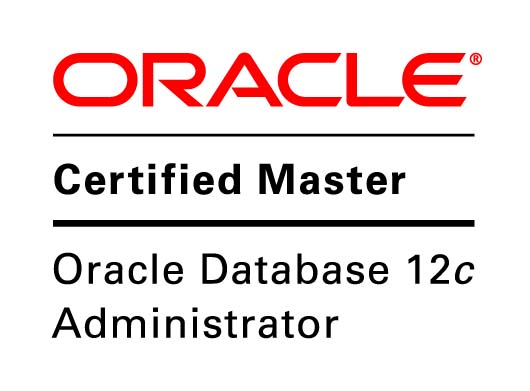
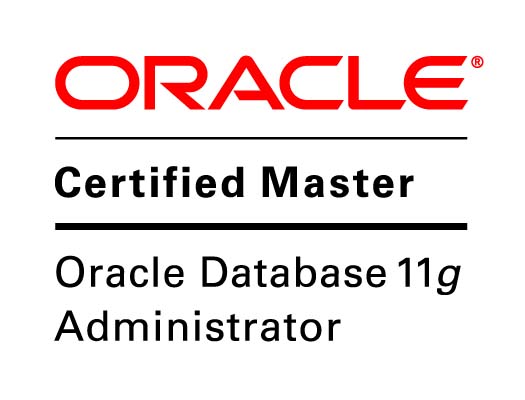
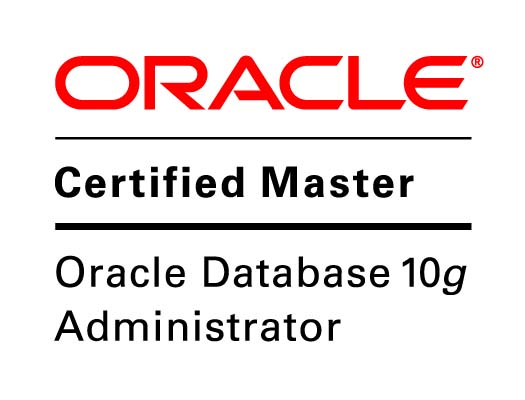
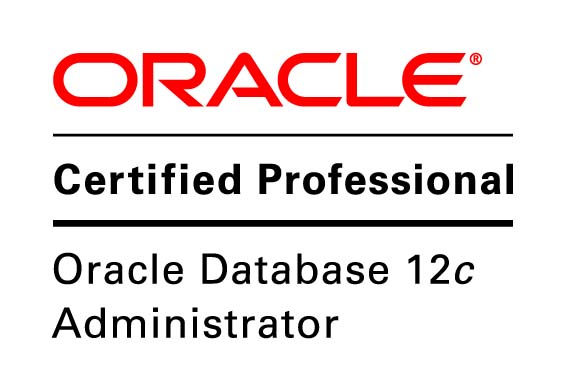
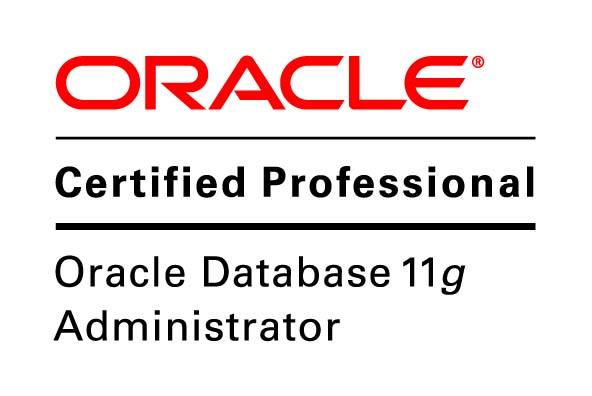
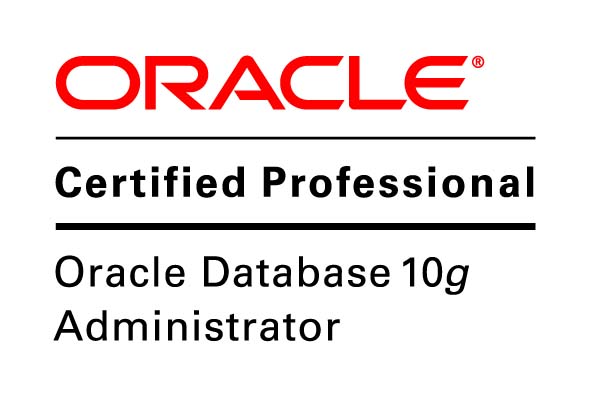
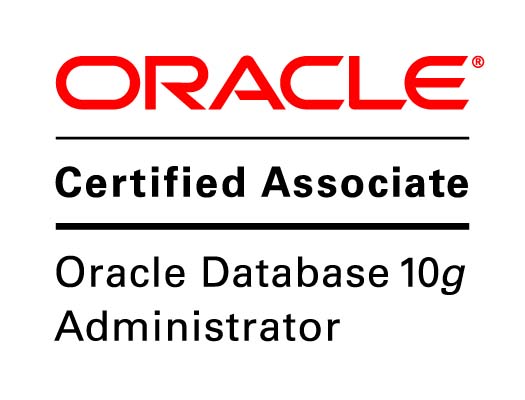

Speak Your Mind